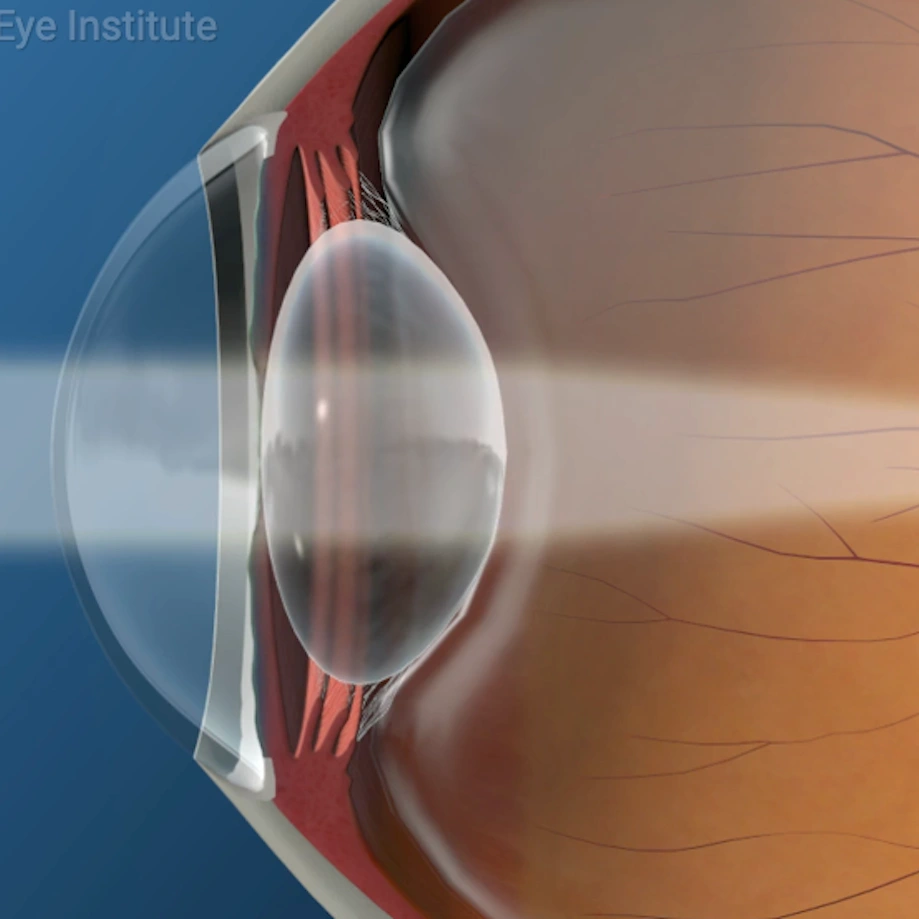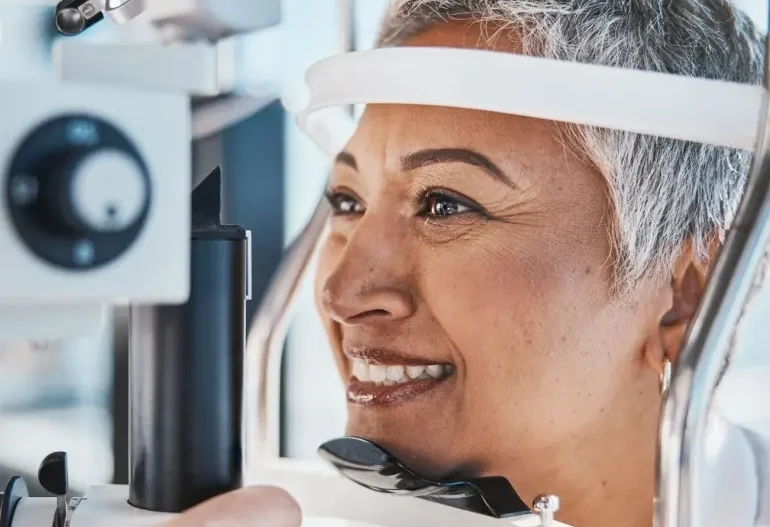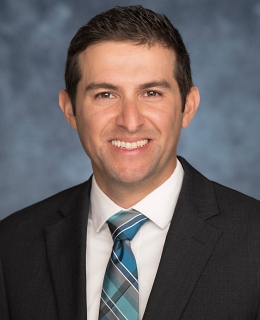
Cataract Surgery
The cataract surgeons at Cincinnati Eye Institute are very highly experienced and can help patients eliminate the blurry or distorted vision that is caused by cataracts. In many cases, patients who undergo cataract surgery with a CEI surgeon are able to achieve even better vision than they had before their cataracts developed.

What are Cataracts?
Cataracts occur when the natural lens of the eye becomes cloudy. This leads to blurry vision, and the only way to correct this is to replace the clouded lens with a clear artificial lens through cataract surgery. Cataracts are incredibly common, affecting more than 24.4 million Americans over the age of 40. By the age of 75, nearly one-half of Americans will have at least one
Trusted Source
Cataract Data and Statistics
National Eye Institute
Go to Source
cataract.
Benefits of Cataract Surgery
Cataracts develop gradually, so many patients are not aware of just how impaired their vision has become until they undergo cataract surgery. After cataract surgery, patients enjoy:
- Sharper, clearer vision
- Colors appear brighter
- Less difficulty with night driving
- Less dependency on glasses and contacts
Related Pages

Who Is A Candidate for Cataract Surgery?
While some patients may choose to delay cataract surgery until their vision is significantly impaired, this is a simple procedure that often yields dramatically improved vision. Candidates for cataract surgery:
- Experience less-than-perfect vision even after updating glasses and contact lens prescriptions
- Have noticed a decline in night vision, or significant glare when driving at night
- Experience symptoms such as blurred vision or dulled colors
- Struggle to see clearly while performing everyday tasks like reading
Cataract Surgery: What to Expect
Preparing for Cataract Surgery
The first step in preparing for cataract surgery is to undergo an examination with an experienced ophthalmologist who can diagnose your cataracts and plan your procedure. You may be asked to use certain eye drops in the days leading up to your procedure, and you may also be asked not to eat on the day of your cataract surgery. You won’t be able to drive yourself home after cataract surgery, so make arrangements for a friend or family member to help with transportation.

The Day of Cataract Surgery
Cataract surgery itself typically only takes about 15-20 minutes, but you should plan to be at the surgery center for several hours on the day of your procedure. In most cases, only one eye is operated on at a time, so you may have two separate surgery days.
Before beginning cataract surgery, local anesthetic will be used to numb your surgical eye for the procedure. Patients may also receive oral or intravenous sedation to help them relax during the procedure.
To begin surgery, your doctor will make a very small incision in the cornea. He or she will then break up the clouded lens and remove it from your eye before replacing it with a clear, synthetic intraocular lens implant (IOL). Because the incision for cataract surgery is so small, no sutures are required in most cases.
Immediately following your cataract surgery, your doctor will tape a protective shield over the affected eye. You will relax briefly in a recovery area before being discharged to go
Trusted Source
Cataract Surgery with Vision Correcting IOLs
American Refractive Surgery Council
Go to Source
home.

Cataract Surgery Recovery
When you get home after cataract surgery, you should keep the protective shield in place over your eye for at least several hours. For the first few days following the procedure, you will be instructed to tape the shield over your eye while sleeping in order to keep the eye protected.
You will be given prescription eye drops to reduce inflammation and prevent infection after cataract surgery, and should use them according to your doctor’s instructions.
You might experience blurred or distorted vision immediately after cataract surgery, but this should improve as the eye heals. You may also notice a sensation of itchiness or soreness in the affected eye during the first few days after cataract surgery. This is normal, and your doctor can recommend over-the-counter medication to help you stay comfortable. Do your best not to rub or touch your eye!
After cataract surgery, most patients are able to go back to normal daily activities in as little as 24-48 hours, and can drive the day after surgery. For at least a week after cataract surgery, you should avoid any high-impact activities that may damage your eye. Avoid swimming for at least two weeks, and make sure to keep your eye protected from small particles like sand or dust. It may take several weeks for your eye to heal completely and for you to achieve the full extent of your vision correction after cataract surgery. Each surgeon may have slightly different preferences for your post-operative care, so be sure to inquire if you have specific questions.
In some cases, patients may begin to experience cloudy vision months or even a few years after cataract surgery. This is not another cataract, but a condition called a “secondary cataract” or posterior capsular opacification (PCO). PCO is a common side effect of cataract surgery and can be treated with a brief outpatient procedure.
Customized Cataract Surgery with Advanced Intraocular Lenses
An intraocular lens, or IOL, is the artificial replacement lens implanted when a patient’s natural lens has been surgically removed during cataract surgery. A wide variety of types of IOLs are available to cataract patients, each offering its own advantages for post-surgery vision.
Types of IOLs include:
- Standard, Monofocal IOLs
- Multifocal & Trifocal IOLs
- Accommodative IOLs
- Extended Depth of Focus IOLs
- Toric IOLs for Astigmatism
The most effective lens to use depends on the patient’s preferences, vision goals, and overall eye health and anatomy. Goals for vision differ according to individual occupations and lifestyles. Some types of advanced IOLs can reduce or even eliminate the need for glasses or contacts after cataract surgery, conveniently providing most patients with clear vision. It is important to realize that not all patients will be good candidates for all IOL options, but your surgeon will discuss the best options for your eyes and lifestyle.

Cataract Surgery Risks
Cataract surgery is one of the most frequently-performed surgical procedures and has a low risk profile. Still, any surgical procedure carries some risk of complications. Complications of cataract surgery, though rare, may include:
- Infection
- Pain after the procedure
- Eye or retina swelling
- Retinal detachment
- Damage to the eye
- Vision loss
- Shifting of the
Trusted Source Cataract Surgery American Academy of Ophthalmology Go to Source intraocular lens implant (IOL)
Frequently Asked Questions About Cataracts
Is it possible to prevent cataracts?
There is no way to prevent cataracts or slow progression once a cataract is present, but it may be possible to delay the arrival of cataracts by taking good care of your eyes by:
- Reducing exposure to UV light by wearing sunglasses
- Stopping smoking
- Eating a healthy diet and taking
Trusted Source Cataract American Optometric Association Go to Source vitamins
Is cataract surgery painful?
Cataract surgery is not painful. You will be given numbing eye drops before the procedure. You may feel some pressure around the eye while the surgery is taking place, but should not have any sharp discomfort. You may feel some soreness or a sensation of itchiness in your eyes in the first few days following cataract surgery.
Will insurance cover my cataract surgery?
Once a person meets certain age and vision requirements, cataract surgery is deemed medically necessary and is covered by Medicare and most private insurance plans. Patients may incur additional out-of-pocket costs for cataract surgery if advanced technology is used.
How does the Light Adjustable Lens work?
The Light Adjustable Lens is made of a special photosensitive material that changes the shape and power of your implanted lens in response to ultraviolet (UV) light. Light treatments are delivered in your doctor’s office with the Light Delivery Device (LDD).
The U.S. Food and Drug Administration has approved the Light Adjustable Lens and Light Delivery Device for patients with pre-existing astigmatism of 0.75 diopters or more who are undergoing cataract surgery. Other commercially available IOLs may be available for the treatment of your cataracts and your doctor will help you determine which lens is right for you.
Are there any differences with a Light Adjustable Lens procedure?
There are two major differences following your Light Adjustable Lens surgery as compared to a non-adjustable intraocular lens (IOL):
- Required wear of ultraviolet (UV) protective glasses
- Completion of light treatments
Exposure to indoor and outdoor sources of UV light can cause uncontrolled changes to the Light Adjustable Lens. To prevent this, you will be provided with UV protective glasses to wear immediately following surgery during all waking hours (from time of lens implantation until after the last light treatment is completed).
Your protective glasses may be removed when sleeping, and may be temporarily removed when showering, washing your face, or applying eye drops as long as you are not exposed to direct sunlight. Twenty-four hours after your final light treatment, no further changes can be made to the implanted Light Adjustable Lens, and you can remove the UV protective glasses and enjoy your custom vision!
Contact CEI for Cataract Surgery
If you are experiencing cloudy vision or have been diagnosed with a cataract, the highly experienced ophthalmologists at Cincinnati Eye Institute can help you achieve clearer, sharper vision. To learn more about your cataract surgery options, please contact us to schedule a consultation.
1 National Eye Institute. Cataract Data and Statistics. Available: https://www.nei.nih.gov/learn-about-eye-health/resources-for-health-educators/eye-health-data-and-statistics/cataract-data-and-statistics. Accessed November 24, 2020.
2 American Refractive Surgery Council. Cataract Surgery with Vision Correcting IOLs. Available: https://americanrefractivesurgerycouncil.org/refractive-surgery-procedures/cataract-surgery-with-vision-correcting-iols. Accessed November 25, 2020.
3 American Academy of Ophthalmology. Cataract Surgery. Available: https://www.aao.org/eye-health/diseases/what-is-cataract-surgery. Accessed November 24, 2020.
4 American Optometric Association. Cataract. Available: https://www.aoa.org/healthy-eyes/eye-and-vision-conditions/cataract?sso=y. Accessed November 24, 2020.
The doctors at Cincinnati Eye Institute have either authored or reviewed the content on this site.

































